Growing Fruit Bushes and Trees
If you take the time to properly plan and care for your fruit bushes and trees, they’ll provide you with delicious, nutrient-dense fruit year after year. Some fruit plants, like strawberries, are easy to grow and will reward you with ripe fruit relatively quickly. Fruit trees, like apple or pear, will require more work and time, but with the right maintenance they will bear fruit for generations.
Think carefully about where you choose to plant and then take time to prepare the site. Most fruit plants need at least six hours a day of sun and require well-drained soil. If the soil is not already cultivated and relatively free of pests, spend the first year preparing the site. Planting a cover crop of rye, wheat, or oats will improve the quality of your soil and reduce weeds that could compete with your fruit plants. The cover crops will die in the late fall and add to the organic matter of the soil. Just leave them to decompose on the surface of the soil and then turn them under the soil come spring.
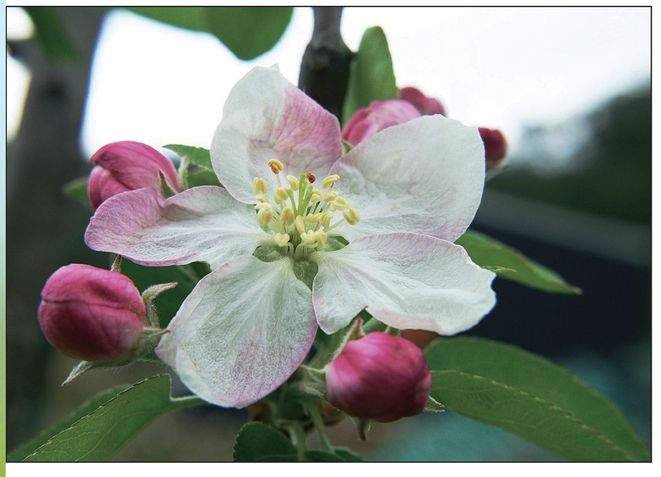
Testing your soil pH the year ahead of planting will give you time to adjust it if necessary to give your plants the best chance of thriving. Fruit trees, grapes, strawberries, blackberries, and raspberries do best if the soil pH is between 6.0 and 6.5. Blueberries require a more acidic soil, around 4.5.

Grains such as wheat can be used as an inexpensive and simple cover crop to enrich your soil.
What plants will thrive will depend largely on where you live, your planting zone (see page 5), your altitude, and your proximity to large bodies of water (since areas close to water tend to be more temperate). Refer to the chart below for hardiness zones for most fruits, but keep in mind that hardiness varies by variety. Refer to seed catalogs or talk to other local gardeners before settling on a particular variety of fruit to plant.
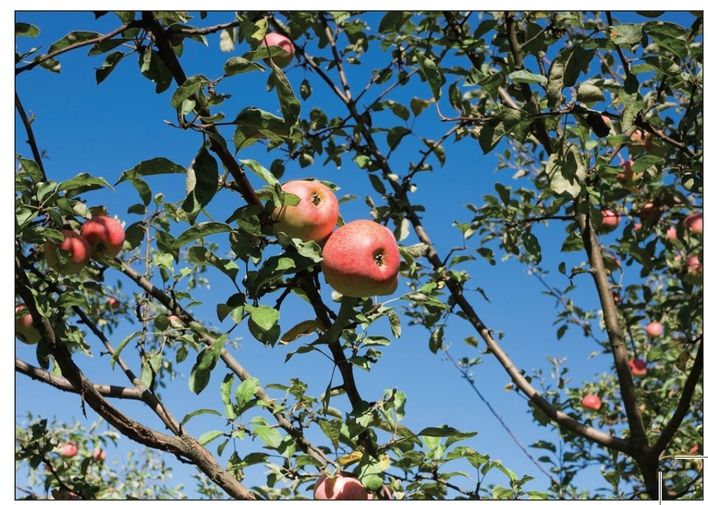
FRUIT GROWING CHART

Strawberries
Purchase young strawberry plants to plant in the spring after the last frost. Try to find plants that are certified disease-free, since diseases from strawberries can spread through your whole garden. Strawberries thrive with lots of sun and well-drained soil. If you have access to a gentle south-facing slope, this is ideal. Till the top 12 inches of soil. If you planted a cover crop, turn under all the organic matter. If not, be sure to add manure or compost to a reach a rich, slightly acidic soil.
Dig a 5- to 7-inch wide hole for each plant. It should be deep enough to accommodate the root system without squishing it. Place the plant in the hole and fill in the soil, tamping it down gently around the plant. Space plants about 12 inches apart on all sides. The roots will shoot out runners that produce more small plants. To allow the plants to focus their energy on fruit production, snip the runners and transplant or discard any new plants.
An alternate planting method is the matted-row system. This method requires less maintenance but offers a slightly lower quality yield. Space plants about 18 inches apart, allowing the roots to shoot out runners and produce new plants. If planting more than one row, space them three to four feet apart. To aid picking and to keep the plants from competing with each other, prune out the plants on the outer edges of rows by snipping the runners and pulling out the plants.
Strawberry plants should receive at least an inch of water per week. In the first year, snip away or pick blossoms as soon as they develop. You will sacrifice your fruit crop in the first year, but you will have healthier plants and a greater fruit yield for many years afterward.
Brambles and Bush Fruits
Most brambles and bush fruits should be planted in the spring after the last frost. Blackberries and raspberries should have any old or damaged canes removed before planting in a 4-inch deep hole or furrow. Do not fertilize for several weeks after planting and even after that use fertilizer sparingly; brambles are easily damaged by over-fertilizing. If the weather is dry, water bushes in the morning, just after the dew has dried, being careful to avoid getting the foliage very wet.
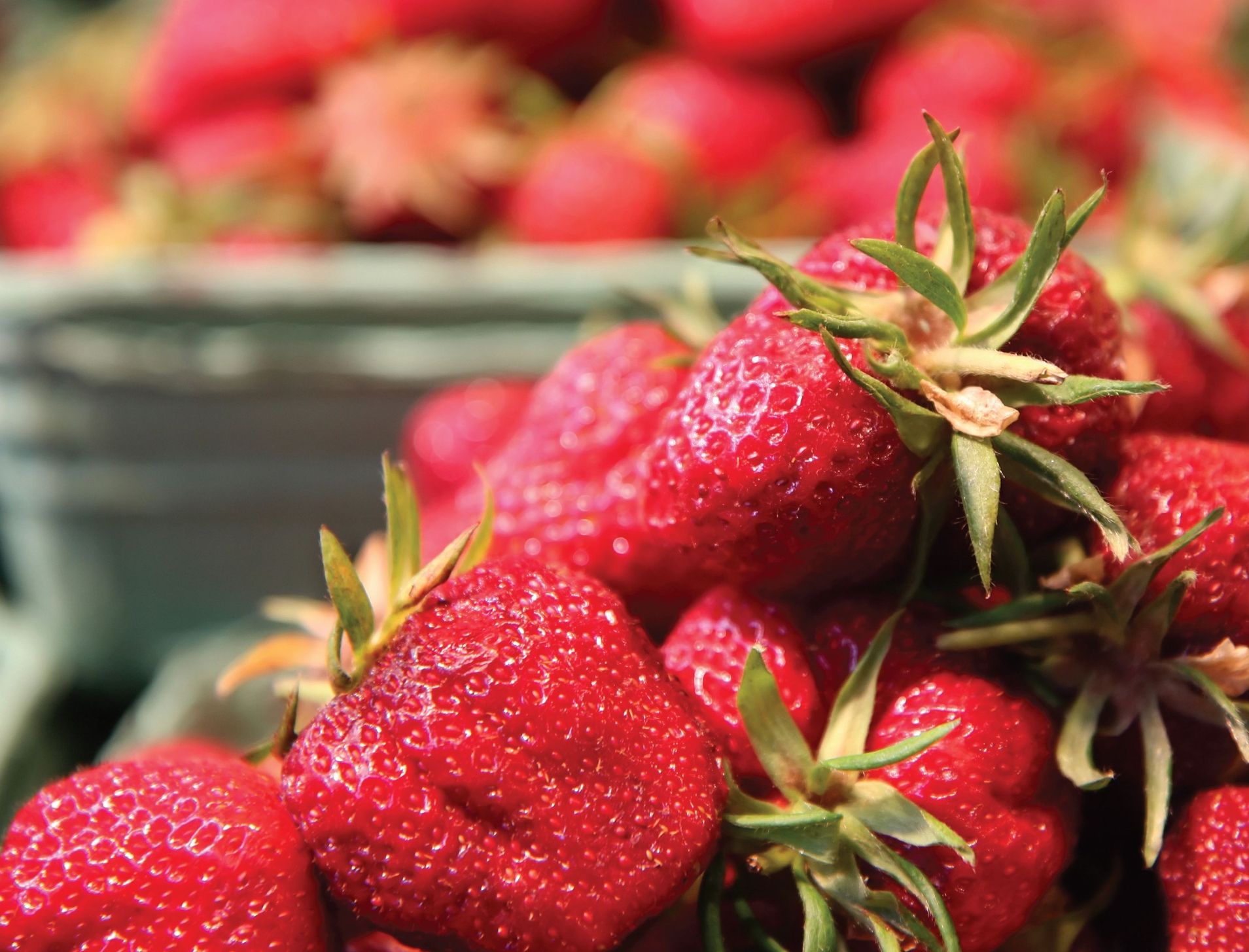

Brambles need to be pruned once a year to keep them healthy and to keep them from spreading out of control. How you prune your brambles will depend on the variety. Fall-bearing brambles (primocane-fruiting brambles) produce fruit the same year they are planted. If planted in spring, they’ll produce some berries in late summer or early fall and then again (lower on the canes) in early summer of their second year. For these varieties, there are two pruning choices. The first option produces a smaller yield but higher quality berries in late summer. For this pruning method, mow down the bush all the way to the ground in late fall. The second method will produce berries in summer and fall, and is the same method used for floricane-fruiting brambles. Allow the canes to grow through the first year and prune them gently in the early spring of the following year. Remove any damaged or diseased parts and thin canes to three or four per foot. Trim down the tops of canes to about 4 to 5 feet high so that you can easily pick the berries. Prune similarly every spring.
Blueberries
Blueberries thrive in acidic soil (around pH 4.8). If your soil is naturally over pH 6.5, you’re better off planting your blueberries in container gardens or raised beds, where you can more easily manipulate the soil’s pH.
Blackcurrants do best planted in full sun and moist, slightly acidic (pH 6 to 6.5) soil. The berries are tart and perfect for use in jams, pies, and other desserts.
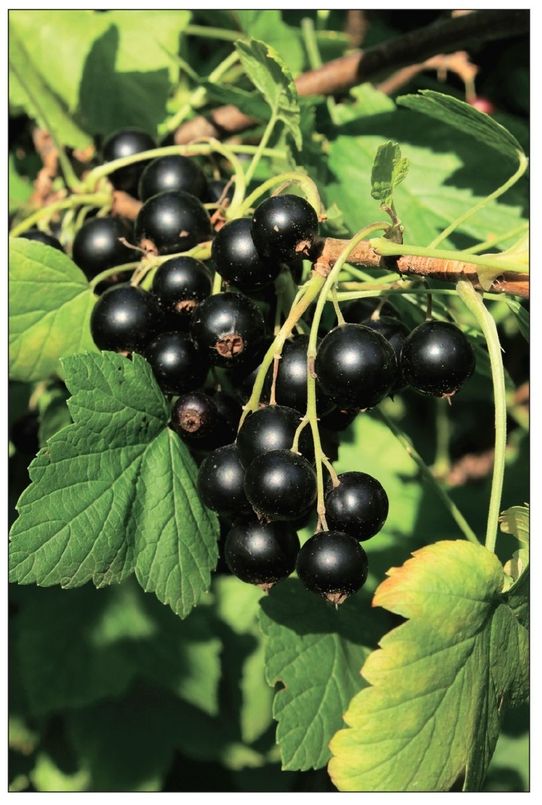
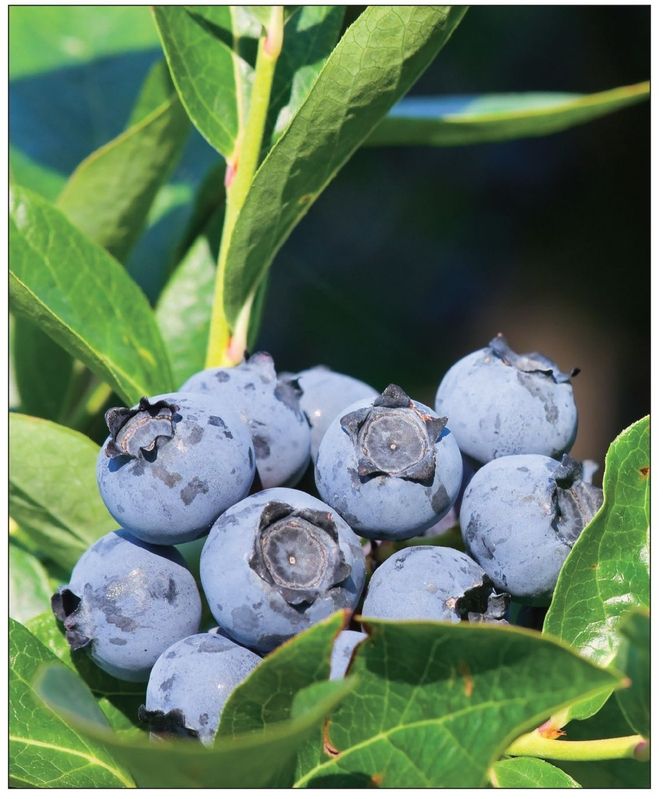
Blueberries should be planted in a hole about 6 inches deep and 20 inches in diameter. The crowns should be right at soil level. Surround the stems with about 6 inches of sawdust mulch or leaves and water the bushes in the morning in dryer climates. Blueberries are very sensitive to drought.
Some varieties of blueberries only require pruning if there are dead or damaged branches that need to be removed. Highbush varieties should be pruned every year starting after the third year after planting. When old canes get twiggy, cut them off at soil level to allow new, stronger canes to emerge.
Currants and Gooseberries
These berries thrive in colder regions in well-drained soils. Plant them in holes 12 inches across and 12 inches deep. They should bear fruit in their second year and will give the highest yield in their in the third year. After that the canes will begin to darken, which is a sign that it’s time to prune them by mowing or clipping at soil level. By this point, new canes will likely have developed. Currants and gooseberries do not require much pruning, but dead or diseased branches should always be removed.
Fruit Trees
Planting
Once you’ve decided on which varieties to plant and have planned and prepared the best site, it’s time to purchase the trees and plant them. Most young trees come with the roots planted in a container of soil, embedded in a ball of soil and wrapped in burlap (balled-and-burlapped, or B&B), or packed in damp moss or Excelsior. It’s best to plant your trees as soon as possible after purchasing, though B&B stock or potted trees can be kept for several weeks in a shady area.
To plant, dig a hole that is about 2 feet deep and wide enough to give the roots plenty of room to spread (about 1 ½ feet wide). As you dig, try to keep the sod, topsoil, and subsoil in separate piles. Once the hole is the right size, loosen the dirt at the bottom and then place the sod into the hole, upside down. Then make a small mountain of topsoil in the center of the hole. The roots will sit on top of the mountain and hang over the edges.
Next, prune away any broken or damaged roots. Pruning shears or a sharp knife work best. Remove roots that are very tangled or too long to fit in the hole. Place the roots into the hole, on top of the dirt mound. If the tree was grafted, it will have a “graft union,” a bulge where the roots meet the trunk. For most trees, this mound should be barely visible above the ground. For dwarf trees, it should be just below the soil level.
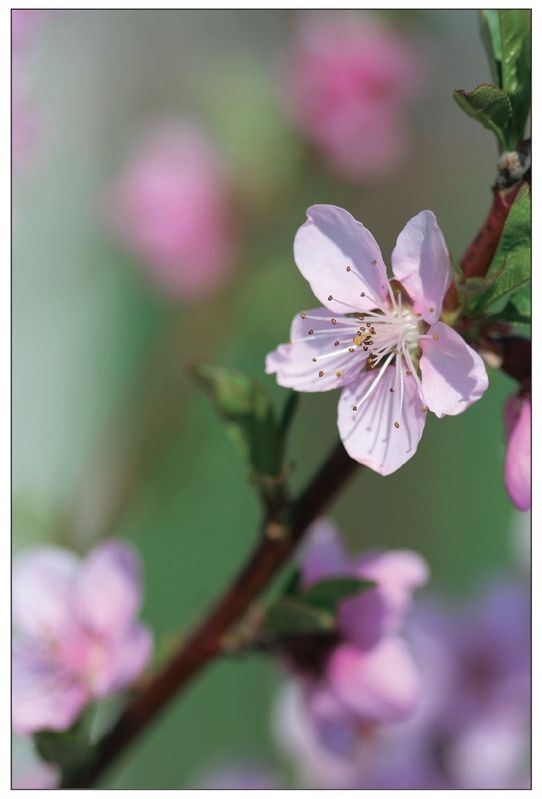
Most young trees need extra support. Drive a 5- to 6-foot garden stake into the ground a few inches away from the trunk and on the south side. The stake should go about 2 feet deeper than the roots.
Begin filling the hole back in with soil, using your fingers to work the soil around the roots and eliminate any air pockets. Add soil until the hole is filled, pat it down until it’s slightly lower than the ground level (to help retain water), and then pour a bucket of water over the soil to pack it down further. Prune away all but the three or four strongest branches and then tie the trunk gently to the stake with a soft rag.
Spread leaves, mulch, or bark around the base of the tree to protect the roots and help retain the water. Because young tree bark is easily injured, wrap the trunk carefully with burlap from the ground to its lowest branches. This will protect the bark from being scalded by sun (even in winter) or damaged by deer or rodents. Leave the wrap on for the first two or three years.
Pruning
Your fruit trees will benefit from gentle pruning once a year. The goals of pruning are to remove dead or damaged branches, to keep branches from crowding each other, and to keep trees from growing so large that they begin to invade each other’s space. Pruning, when done properly, will produce healthier trees and more fruit.
Pruning shears or a pruning saw can be used. When removing a whole branch, try to cut flush with the trunk, so that no “stub” is left behind. Stubs soon decay, inviting insects to invade your tree. A cut that is flush with the trunk will heal over quickly (in one growing season). If you’re removing part of a branch, cut slightly above a bud and cut at a slant. Try to choose a bud that slants in the direction you want a new branch to grow.
When removing particularly large branches, care should be taken to ensure that the branch doesn’t tear away large pieces of bark from the trunk as it falls. To do this, start below the branch and cut upwards about a third of the way through the branch. Then cut down from the top, starting an inch or two further away from the trunk.
If your pruning leaves a wound that is larger than a silver dollar, use a knife to peel away the bark above and below the wound to create a vertical diamond shape. Then cover the wound with shellac or tree wound paint to protect it from decay and insects.
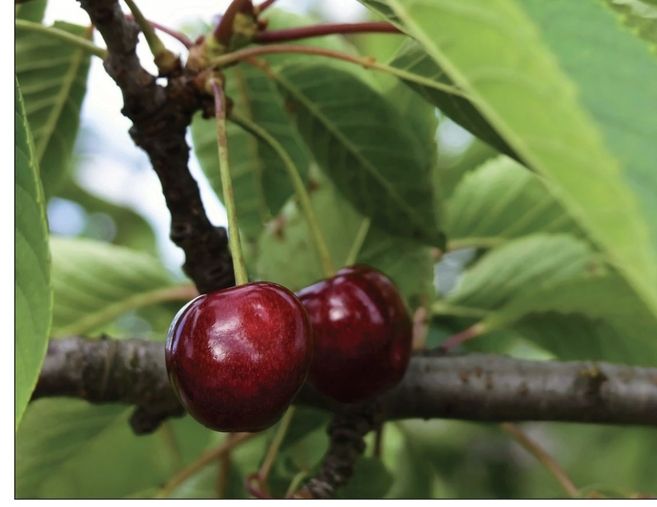
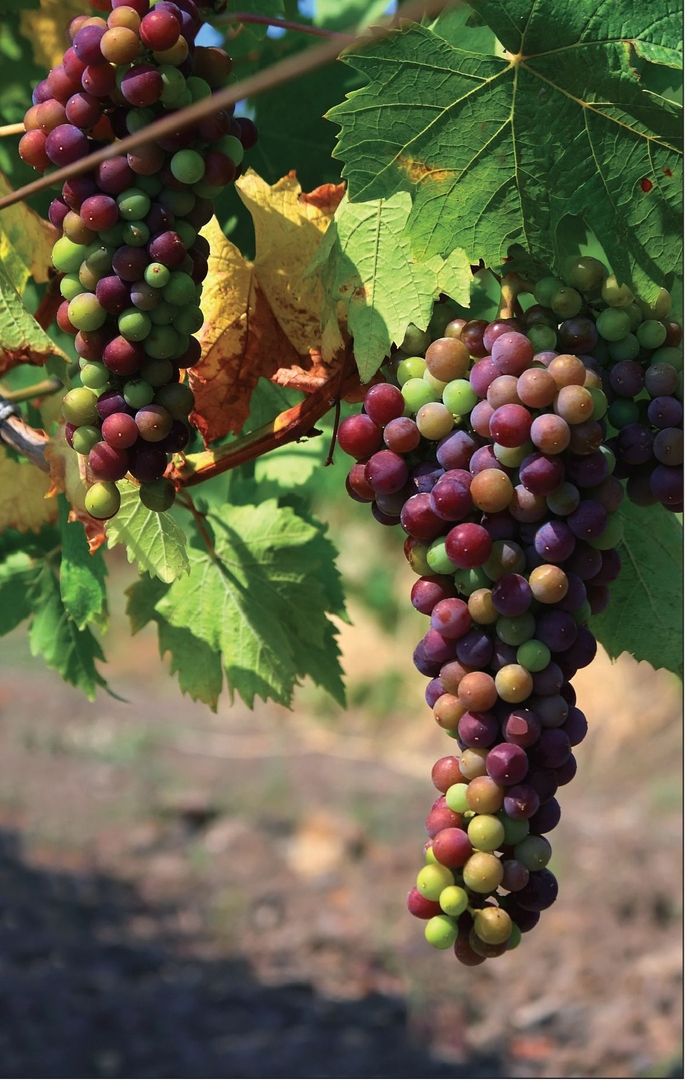
Grapes
Talk to someone at your local nursery or to other growers in your area to determine which grape variety will work best in your location. All varieties fall under the categories of wine, table, or slipskin. Grapes need full sun to stay healthy and benefit from loose, well-drained, loamy soil.
Before planting your vine cutting, soak it in a bucket of water for at least six hours. Cuttings should never dry out. Grape vines need a trellis or a similar support. Dig a hole near the trellis deep enough to accommodate the roots and douse the hole with water. Place the cutting in the hole and fill in the soil around it, adding more water as you go, and then tamping it down firmly. Prune away all but the best cane and tie it gently to the support (a stake or the bottom wire of a trellis). Water the vine once a week for at least the first month.
Don’t use any fertilizer in the first year as it can actually damage the young vines. If necessary, begin fertilizing the soil in the second year.
Buds will begin to grow after several weeks. After about ten weeks, remove all but the strongest shoots as well as any flower clusters or side shoots. Every year in the late fall, after the last grapes have been picked, remove 90 percent of the new growth from that season. You should be able to harvest fruit in the plant’s third year.

A simple grape arbor can be made by firmly lashing or nailing together trees with their bark removed. Be sure the supporting posts are inserted at least a few feet into the ground.